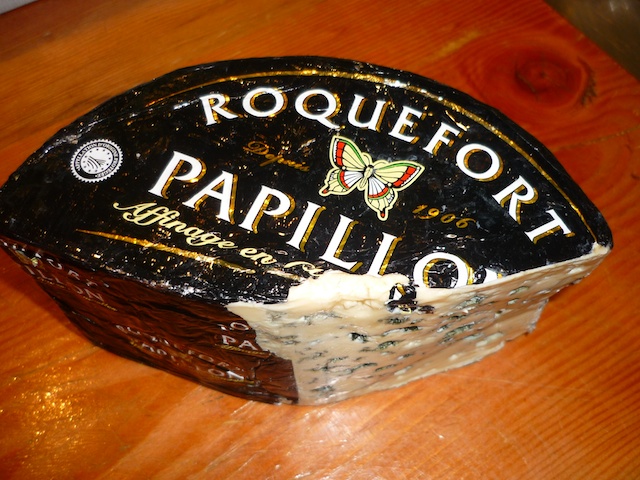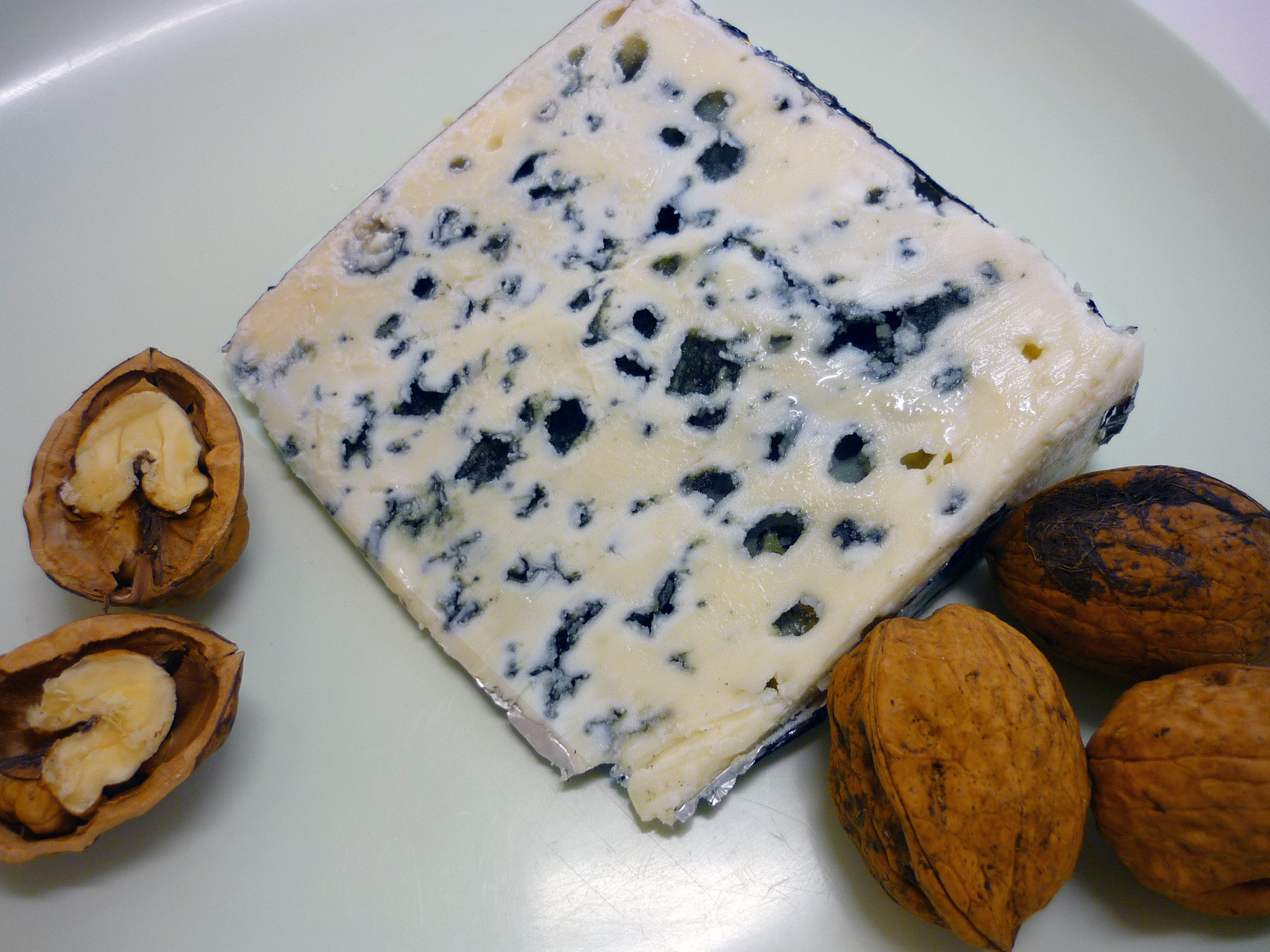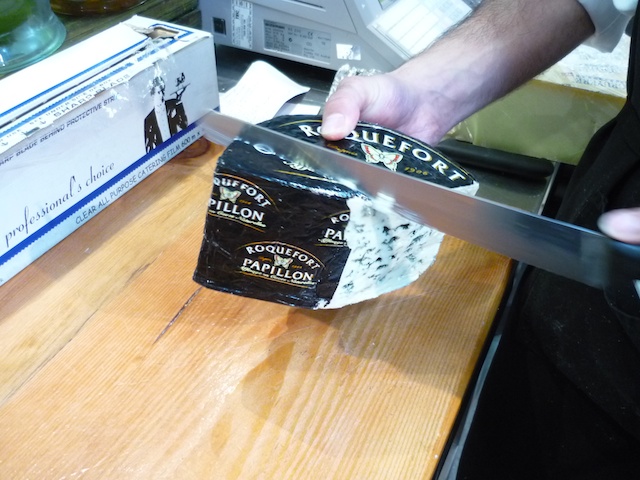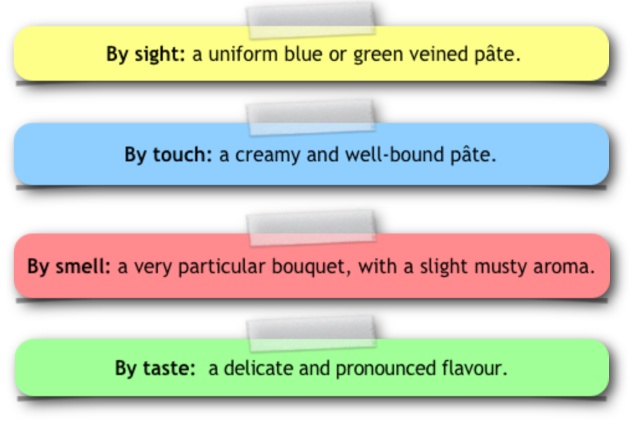Roquefort – the king of blue cheese from the Rouergue (département of Aveyron).
Roquefort is made exclusively from raw full-cream ewe’s milk and is a blue vein cheese. The fat content is at least 52%.
Origins of Roquefort
From the 8th century, Roquefort was mentioned in numerous legal deeds concerning the Rouergue (the old French province where the Aveyron département is now located). Charlemagne had made it his favourite cheese.
In 1411, Charles VI understood the vital need to protect Roquefort “in a land in which neither a vine plant nor a grain of wheat grow”, and in 1666, the Toulouse Parliament granted the inhabitants of Roquefort “the monopoly of the cheese affinage”. During the Revolution, the privileges granted to Roquefort were maintained by the Convention (France’s executive during the Revolution).
Roquefort production area

The Roquefort cellars have been laid out in the midst of an immense heap of fallen rocks at the edge of the Grandes Causses. Dampness emanating from the depths of the mountain penetrates the cellars through long faults in the rock.
While the affinage is done only at Roquefort, the milk needed to produce the cheese is collected throughout the département of Aveyron and nearby départements.
The production of Roquefort

Roquefort follows unchanging methods.
The heated milk is curdled with rennet. The Penicillium seeding happens after the processes of cutting and kneading, either at the renneting or at the moulding stage.
The cheese is turned five times per day while draining.
After going through the salting process which uses sea salt, the cheeses are sent to Roquefort for affinage.
The affinage process, set in naturally ventilated cellars, is completed with the ripening of the cheese at a low temperature. Roquefort cannot be sold before it is three months old.
Selection and tasting of Roquefort

Roquefort come in a cylinder around 10 cm thick and its weight varies from 2.5 kg to 2.9 kg. It is wrapped in a foil jacket bearing the label “Roquefort” followed by the acronym “AOC” and the confederal trademark of the “Brebis Rouge”.
Roquefort is used for culinary preparations such as canapés, salads, soufflés, puff pastries, etc.
It complements dessert wines (Sauternes) or sweet natural wines (Porto).
Roquefort received the ‘appellation d’origine contrôlée’ label in 1925.




